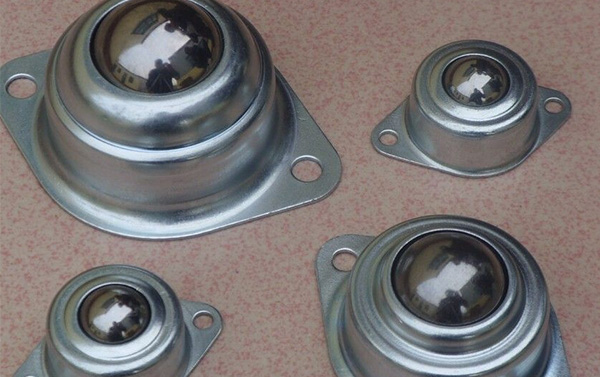





Ball transfers, also known as transfer balls, are an ideal solution for smooth and precise load movement in a variety of applications.If you are looking for the right ball bearings for your project, please contact the NSAR team.
Categories: Punching Bearings
Ball transfers, also known as transfer balls, are an ideal solution for smooth and precise load movement in a variety of applications. Ball transfer bearings are available in surface mounted, groove mounted, or spring loaded types. The mounting type varies depending on the application, allowing both small and large loads to be moved with ease. When using a ball transfer, it is important to consider the weight of the intended use. The maximum load of a ball transfer is high, but this load is often distributed across multiple transfer balls, allowing larger loads to be moved with ease.
| Product Name: | punching bearing 16*35*11mm,Flange bearings | Brand: | Without brand |
| Structure: | Punching | Country of origin: | China |
| Type: | Ball Bearings | Lubrication: | grease |
| Material: | steel board | Model: | 16*35*11 |
| Service: | OEM Service | Package: | bulk packing and plastic tube |
| Sample: | Available | ||
When objects are pushed across the ball conveyor platform, the bearings allow the objects to move smoothly in any direction. Allowing objects to move smoothly in any direction eliminates the need for manual operation, which often leads to accidents.
Each ball conveyor consists of a ball mounted in a housing with a ball bearing that allows the ball to rotate in all directions. They are mounted on conveyors or fixed surfaces so that items can roll smoothly along them. Ball conveyors can be used to replace existing ball conveyors in ball conveyor platforms, inserts and brackets, or to create custom conveyors. Some ball conveyors can also be used as a replacement for casters in certain applications. When used in conveyor applications, ball conveyors allow conveyed items to move in all directions at transition points (entrance, intersection or exit) in the conveyor system. They help reduce the amount of effort required to move loads in warehousing, package handling, manufacturing and distribution applications.

Ball transfers are available in a variety of materials, such as aluminum, steel, and stainless steel, while ball materials include steel, polyurethane, and rubber.
Surface Mounted – Ball transfers can be bolted down and secured to a flat surface.
Flush Mounted – Ball transfers are mounted into pre-defined holes on the transfer. Some models allow the transfer to be dropped into place.
Spring Loaded – Ball transfers are spring reinforced, allowing them to carry high load capacities.Click to read our product list.
A typical ball deck has hundreds of stainless steel balls embedded in a grid pattern. When a pallet or other heavy object is placed on the ball deck, its weight is supported and evenly distributed. Workers can then easily push the pallet by hand to slide it across the ball deck surface. Despite the pallet’s weight, the ball allows the pallet to roll smoothly in any direction with just a gentle push.Get details on our Pillow Block Ball Bearings.
Ball decks are commonly used for material handling of pallets and heavy objects in warehouses, distribution centers, and manufacturing plants.
Transfer bearing are used in a wide range of industries around the world. They are ideal for moving loads that need to move smoothly and with minimal force in any direction.
Applications include:
• Freight • Robotics
• Store Fixtures • Laser and Plasma Cutters
• Medical Equipment • Caster Replacement
• Material Handling • Glass and Metal Fabrication
Transfer bearings unit are able to carry high capacity loads while effectively eliminating any potentially dangerous vibrations. From initial design to production line to our products arriving at your door, these bearing actuators are built to last. We’re in it for the long haul.
With low friction and high load capacity, these ingenious bearings obviously offer a major advantage when it comes to handling heavy loads. If you are looking for the right ball bearings for your project, please contact the NSAR team.


Blog:
Copyright © NSAR Bearings. All rights reserved. Privacy Policy